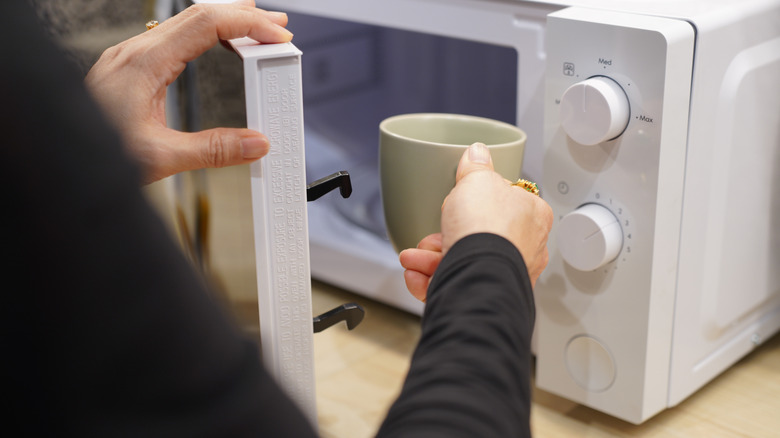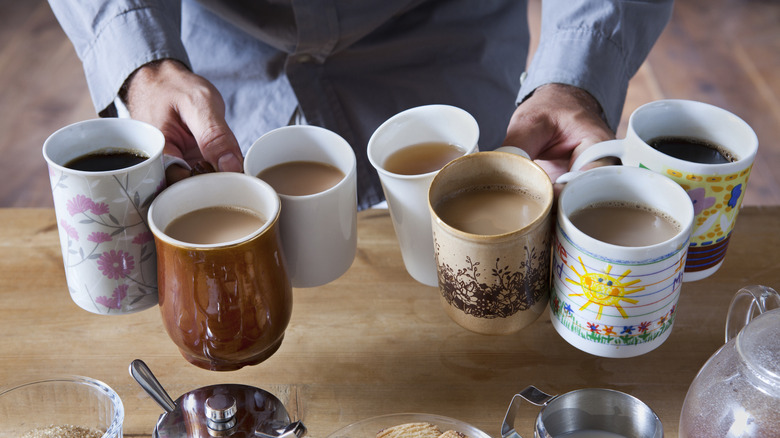The Coffee Mugs You Should Seriously Never Microwave
Microwaves are wonderful inventions. After all, where would we be without Orville Redenbacher's popcorn or Hungry-Man TV dinners? But, with such powerful technology must also come some knowledge of just how microwaves work. In a nutshell, our food and drinks become hot because of electromagnetic waves (produced by a magnetron component inside the microwave) that cause water molecules to vibrate furiously. This vibration produces a heat that cooks your pasta or soup from the inside out. When your meal is in a microwave-safe bowl, everything works as it should, because the microwave targets water, fat, and sugar molecules. This is also why you should never microwave an empty cup or plate — without any liquids to absorb the waves, the container will get dangerously hot and possibly crack.
If you've ever absent-mindedly thrown your favorite vintage coffee cup in the wave and seen sparks fly, you've learned the hard way that there are many mugs out there that just can't handle those high-powered electromagnetic waves. Most of the coffee mugs you've got in your cupboard are likely made of ceramic or glass and have been tested to ensure they won't shatter (or worse) when heating food or liquids. However, there are definitely some materials to avoid when it comes to zapping your beverage. Here's why you should never put metal or plastic mugs — or mugs that are cracked or damaged — in the microwave.
A guide to microwave-safe mugs
Metal or metallic elements are one material that should never enter a microwave, even if it's just the tiniest gold trim around the base of a cup. Metal reflects a microwave's energy instead of absorbing it, causing the waves to bounce off and create concentrated electrical currents. This produces a phenomenon called "arcing" that causes actual sparks — this not only damages your microwave it can also pose a fire risk. So, it should also go without saying that the metal risk also includes any insulated mugs, like those you travel or camp with, because they're often lined with stainless steel.
Other materials to watch out for include handmade mugs with unknown glazes, cracked mugs, and most types of plastic. Maybe you scored a kitschy mug at Goodwill, but you're not sure what it's made of. Unfortunately, older mugs may contain lead in their glaze, which can leach out when heated. They could also contain other unknown materials that simply don't meet modern safety standards. To err on the safe side, you'll also want to avoid heating plastic, as plastic mugs warp, melt, or release harmful chemicals like BPA. Of course, any mug with a crack or damaged glaze could also leach unsafe materials, in addition to uneven heating. In short, stick to ceramic mugs whenever possible, and always look for the microwave-safe symbol (a square with wavy lines) when in doubt.

